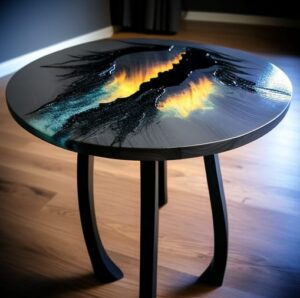Wood milling services
The company “FratribusDesign” accepts orders for wood milling in Vilnius. We process solid wood species. You can also order laser cutting and laser engraving on wood from us.
The quality of the work depends on the structure and properties of the raw material (moisture content, presence of defects, hardness/softness of the material); accuracy of the drawing, equipment capabilities, operator qualifications. Our specialists have extensive experience; we use professional CNC machines in our work, thus guaranteeing high-quality order processing.
If you have a ready-made drawing, we will use it after checking it with technical specialists. If there is no layout, we will prepare documentation according to your technical specifications.
Your toilet set and furniture should be as individual as you are – that is why we offer you comprehensive, one-stop service: from consultation and design to material selection from a variety of fine woods, to implementation and delivery. At Fratribus Design, each piece is unique, and we are only satisfied when you are.

FEATURED
Our team is dedicated to providing innovative solutions that combine cutting-edge technology with artistic craftsmanship.
Wood milling
Wood milling is one of the technologies of mechanical wood processing. Made with hand tools and CNC machines. The automated process is characterized by high accuracy and productivity. The main working tool of the plant is a milling cutter rotating at high speed, moving in three or four axes (depending on the power of the machine) and cutting off a predetermined layer of material.
Milling is used to produce wooden furniture, outdoor advertising signs, plaques, wood decor of any complexity and other products. The technology allows the production of relief surfaces, for example, recesses, through and countersunk holes, grooves and others.
Types of wood milling
1. Engraving and figure cutting take place on one plane. Usually, a milling cutter is involved.
2. 3D wood milling is done in several levels. The process consists of two steps: roughing and finishing, for which the optimal cutter is selected.
In the first step, a cutter with a larger diameter works, removing the main layer of material. In the final stage, machining is done with a cutter with a smaller diameter at a lower speed. The result is a finished part with flat and smooth surfaces.
